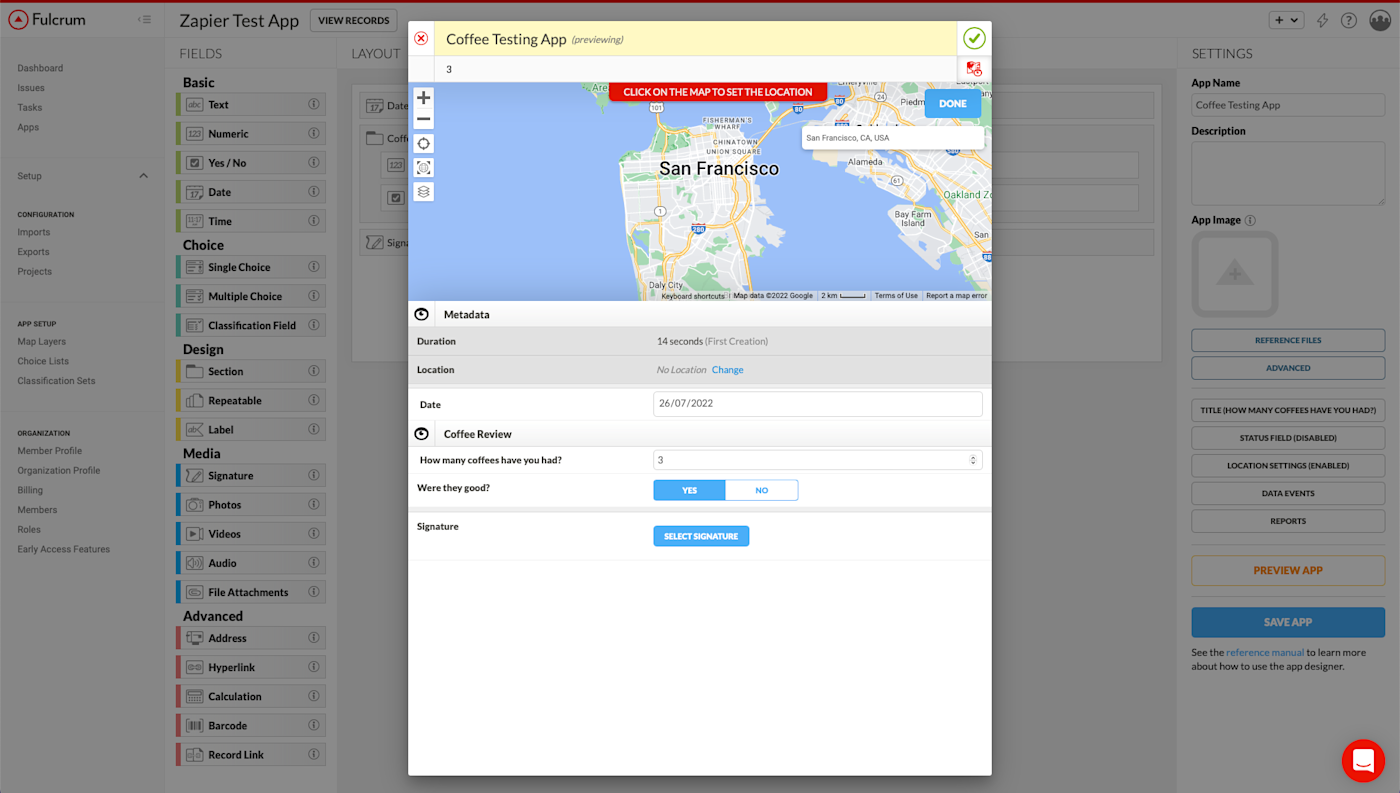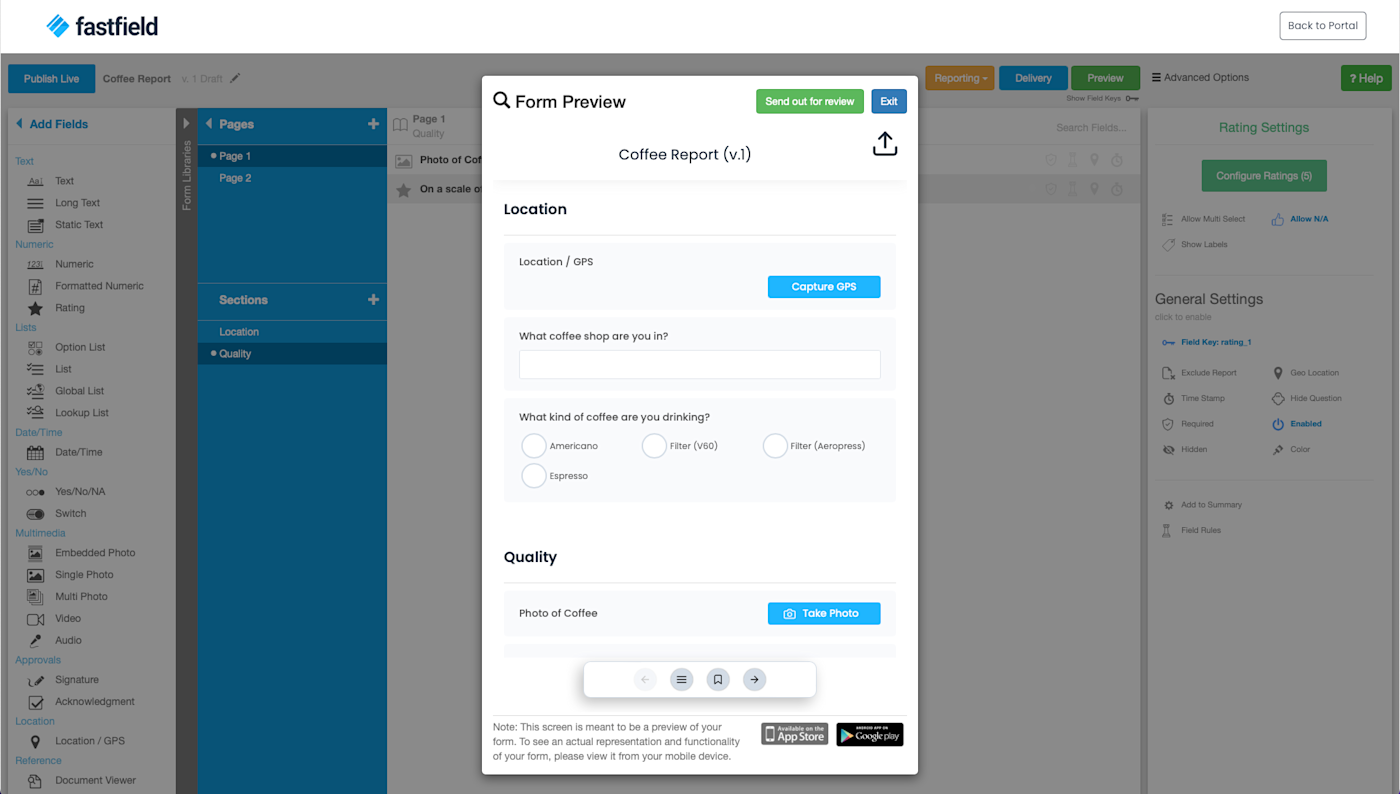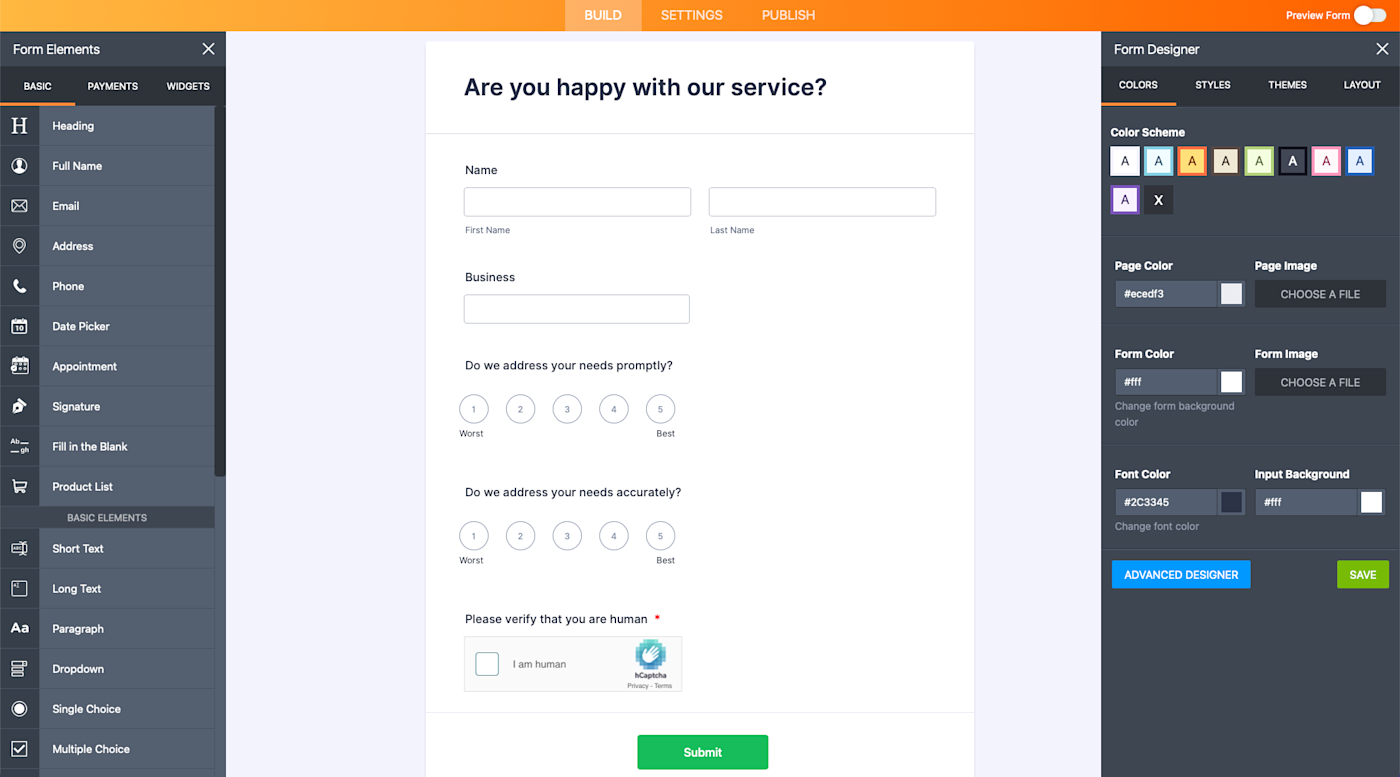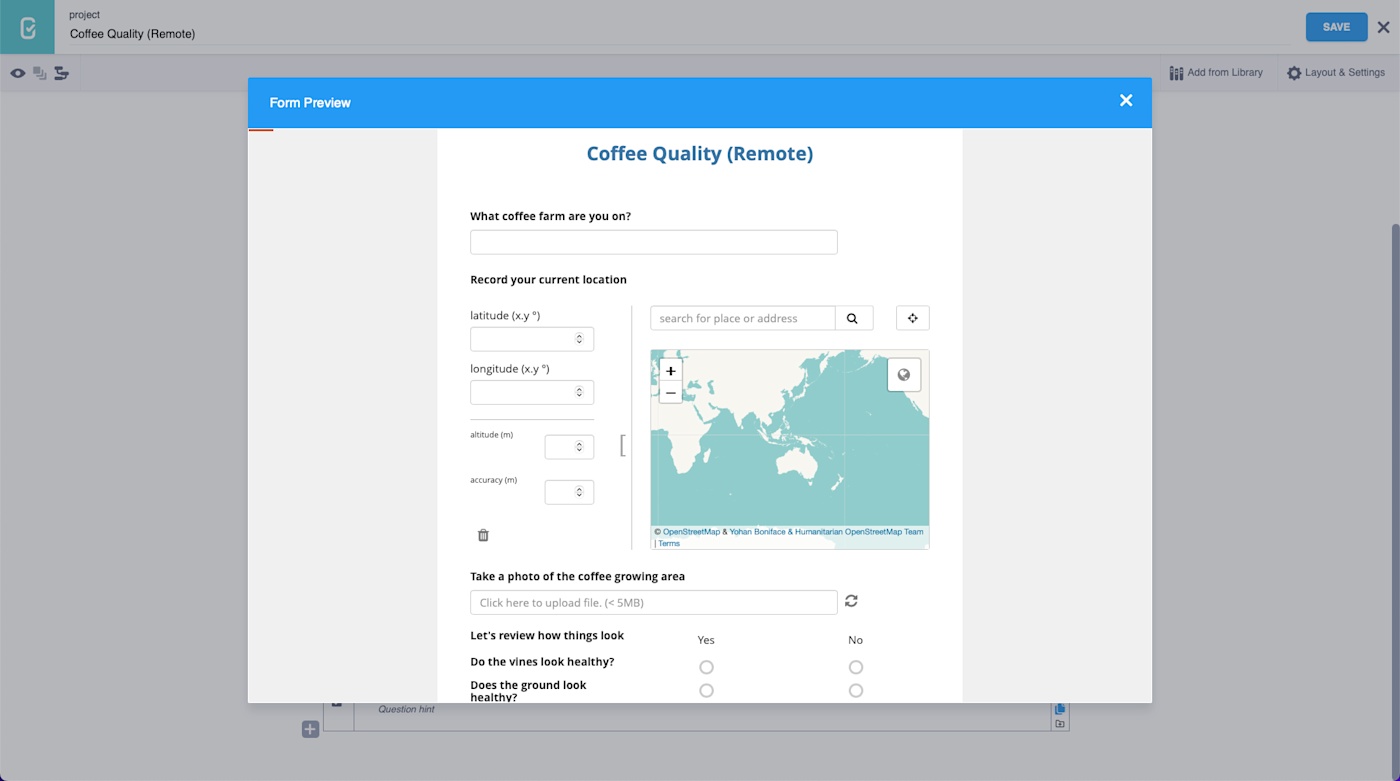Easy Way to Collect Data in Production Environment
Collecting good data in the field often requires tools that can't be found in Excel spreadsheets, form builders, and survey apps. Depending on what the data will be used for, data collectors, researchers, inspectors, and anyone else involved may need to capture time-stamped images and video or accurate GPS coordinates, then complete a questionnaire, all before legally signing off on the form and sending it in. Great data collection software enables you to do all this and much more. You aren't just stuck sticking responses into a spreadsheet, whether you're in the field or working from an office.
We tested all the most popular data collection apps we could find. Here are our five favorites that can help your team maximize productivity, reduce errors, and increase the speed of your data collection. They're all relatively easy to get started with (at least as far as data collection apps go), so even if you've never used these kinds of apps before, it won't take you too long to get up and running.
The 5 best data collection tools
-
Device Magic for pre-filling form data
-
Fulcrum for geolocation with custom maps
-
FastField for overall ease of use
-
Jotform for form-building options
-
KoBoToolbox for the best free data collection app
What makes a great app for data collection?
How we evaluate and test apps
All of our best apps roundups are written by humans who've spent much of their careers using, testing, and writing about software. We spend dozens of hours researching and testing apps, using each app as it's intended to be used and evaluating it against the criteria we set for the category. We're never paid for placement in our articles from any app or for links to any site—we value the trust readers put in us to offer authentic evaluations of the categories and apps we review. For more details on our process, read the full rundown of how we select apps to feature on the Zapier blog.
Field data collection tools have to do a few things:
-
They need to make it easy for your staff or research team to accurately track the information they need.
-
They have to work offline, so you aren't worried about a cellular or Wi-Fi connection in remote locations.
-
And they need to make it so you can use the data and see what's happening.
These are all a given, and to be honest, even the worst tools we tested mostly met these criteria—they were just more awkward and otherwise unpleasant to use. What separates a great data collection tool from the merely adequate, then, are all the extras. Here's what we were looking for when testing these apps for data collection:
-
A unique or standout feature that the app did better than its competitors. Some apps handle location data really well, whereas others have incredibly intuitive form builders. For each app, we needed some special reason that it was worth including.
-
Relative affordability. Some of these apps can get expensive quickly, especially for large teams. Where two apps offered similar feature sets, we favored the ones with the lowest—or at least easiest to understand—pricing.
-
Integration with third-party apps, APIs, and other external tools. Gathering data is all well and good, but you also need to be able to do something with it. The better your data collection app integrates with the rest of the software you use, the easier it is for you to understand what's happening on the ground.
-
Nice and intuitive to use. Almost all of us have used tools that feel like they were designed by a committee that had just watched a short YouTube video on the problem they had to solve. It's infuriating having to battle against badly designed, horrendously laid out, and just awful user interfaces. Not only are all these tools nice to use, but they also allow you to make data collection tools that are nice to use.
In addition to my decade of experience as a tech writer and app reviewer, I also have a BSc. in Psychology and an MSc. in Business and Management, so I'm familiar with many of the problems surrounding collecting and collating good data. Since data collection is such a broad problem to solve—and the apps that tackle it do so in similarly broad ways—there wasn't really a universal testing protocol for these apps.
I signed up for whatever trial account was available and tried to use it in the way the app encouraged me. Where there were tutorials or sample data, I followed along or explored them. For some apps, this meant building a data collection survey to measure my own coffee intake—and the quality of it; for others, it meant building a door-to-door sales tracking app, or at least my take on one. Testing took as long as it took for me to really get a feel and understand the basics of each app. For some that didn't make the list, the signup process was enough to exclude them. For others, I installed an app on my phone and wandered around my neighborhood. In total, my testing took place over the course of a week.
I also relied on the work of the other writers and researchers who have updated this list over the last few years to help evaluate the quality of the apps we tested. Data collection isn't an exciting, fast-moving category, so if you've read this article in the past, you'll notice that our picks are relatively consistent—this year, one app fell off the list and another was added.
And now, onto the best software for data collection.
Best data collection app for pre-filling form data
Device Magic (Web, iOS, Android)

Device Magic is one of the best data collection apps for businesses with teams that have to handle a lot of different survey locations or job sites. Its "low-code" drag-and-drop form builder is really easy to use, while still being powerful enough to manage almost any kind of inspection, maintenance, quality control, safety, or other kind of compliance form. Answers can be automatically time-stamped or geo-stamped, to prove when and where the form was filled in.
One of Device Magic's best features is called Dispatches. It allows pre-populated forms to be sent to people (or devices) in the field. Not only does this make it easier for managers to direct team members on location, but it adds an extra layer of quality control to the data. It's much easier to make a mistake entering a device identification number or part code when you're outdoors or in a factory, than it is when you're sitting in a comfy chair at the main office.
Device Magic also makes it easy to build automated workflows around your data collection forms. Every one has a number of Destinations—these are things like a PDF sent to an email address or a spreadsheet recorded to Device Magic's database. But you can also set up certain Destinations to only trigger when specific conditions are met. For example, if a machine part is logged as needing maintenance, an email can be sent directly to the head of maintenance with all the necessary details. If the same machine part is logged as in need of replacing, a different email can be sent to the purchasing department. And, of course, if nothing needs to be done, no email gets sent.
As an added benefit, Device Magic integrates with Zapier, so you can use almost any app as a Destination. This allows you to do things like automatically send a Slack message to your team when you receive a new form submission, or add new Google Sheets rows based on form data.
Device Magic pricing: Free 14-day trial of all features; the free plan includes unlimited forms and submissions for one device. The Professional plan is $30 per device per month with a minimum of three devices. The Dispatch feature and Zapier integrations are only available with the Enterprise plan (get a custom quote).
Best data collection app for geolocation and custom maps
Fulcrum (Web, iOS, Android)

Fulcrum is an inspection-focused data collection app with advanced geolocation features. It's built on top of Google Maps, which lets you use street, satellite, hybrid, and terrain basemaps, and supports custom map layers in a variety of formats, so you can overlay your own data using a service like Mapbox, or from sources like the U.S. Census Bureau or USGS. The app also automatically geo-tags photos, video, and audio even without cell or Wi-Fi coverage.
Some of Fulcrum's targeted industries include oil and gas, environmental, and utilities because of their need for gathering real-time geospatial and safety data. Normally data collectors in these fields would simply receive a text-based list of GPS locations, which is difficult to analyze and understand. With Fulcrum, they can overlay those GPS locations onto a variety of different maps to better understand and visualize patterns from their data—or even just work out what location they should visit next.
Fulcrum calls its forms "Apps." You can build your own from scratch with an intuitive drag-and-drop editor or use one of Fulcrum's templates. In a nice onboarding touch, the developers will also convert your first paper form or other template into an App for free. Like all the other services on this list, you can use Fulcrum's apps to collect nearly any data type you like, including audio clips, videos, signatures, and scanned barcodes.
If you need to share your form data, Fulcrum allows you to export it in a variety of different formats from the web app, including Excel, CSV, and Shapefile. You can also create PDF reports from your iOS or Android app and share them via email, SMS, Dropbox, or any other supported app on your device.
One downside to Fulcrum is, because of its focus on geolocation data, it relies more heavily on its iOS and Android apps for data collection. While you can import data into the web app, it isn't as intuitive to do so as it is with some of our other picks.
And because Fulcrum integrates with Zapier, you can more easily act on form data using your favorite apps, like creating a new spreadsheet row when a new Fulcrum record is created or sending an email when a record changes status.
Fulcrum pricing: From $15/month for the Starter plan that includes 10 GB storage.
Best data collection app for overall ease of use
FastField (Web, iOS, Android)

FastField makes the entire data collection process easier, from designing and validating a form to the many options for creating and sending your data. And this isn't to say it's a simplistic app—FastField is still packed with advanced features.
From when you first sign up, FastField guides you through everything you need to know. There's a tutorial video on creating your first form, but there's also a Help bar on the right that offers guidance and links to the Help Center, as well as a pop-up chat support. Even when you're building a form, FastField makes it simple—every single item has a little ? next to it. Hover over it, and you'll get a short description of what it does and how it works. (Even the advanced options have tooltips when you hover over them.)
FastField's simplicity extends to its pricing model. It's $20/user/month for everything. While you can negotiate a bulk or long-term discount, or pay extra to replace FastField's branding with your own, you'll never have to worry about plans, tiers, or other locked features. If you don't need the specific features some of our other picks offer, the overall ease-of-use makes FastField a great option to go with.
You can also connect FastField to other apps using Zapier and a FastField-provided API key, which I received from their tech support. That way, you can do things like have new FastField form submissions get added to Trello cards or sent as messages in a Slack channel.
FastField pricing: Free 14-day trial; $20/user/month for unlimited forms.
Best data collection app for form-building options
Jotform (Web, iOS, Android)

Jotform is one of the most flexible options on this list. You can use it to build almost any form imaginable, either from scratch or using one of the more than 10,000 templates. Its 100+ widgets allow you to do things like embed instructional YouTube videos, get signatures using DocuSign, or even take payments using Stripe, PayPal, or Apple Pay.
Unlike some of our other picks, you can use Jotform to collect data without sending someone with a device out on location. You can create a customer satisfaction survey, custom order form, or anything else you'd like to ask your clients, and administer it through a web-browser.
Jotform's flexibility comes with a couple of downsides. It's much more of a form builder than some of our other picks, which means things like automatic time stamping or geolocation aren't really an option. Of course, you can see when a form is submitted or ask people to enter their location, but you don't have the same guarantee that the data is entirely accurate.
Similarly, Jotform is designed for one person to create forms and then send them out to be filled in. This means that all Jotform's non-Enterprise plans only allow for a single user. Of course, you can create the forms and then send them to your team members to fill in on location, but they won't have access to the backend (although there are still ways they can collaborate with you.)
Once you start getting form submissions, you can automate data entry into other apps with Jotform's Zapier integrations. Here are a couple of examples to get you started.
Jotform pricing: Free for five forms, 100 monthly form submissions, and 10 payment submissions; $29/month for the Bronze plan, which includes 25 forms, 1,000 monthly form submissions, and 1 GB of storage.
Best free data collection app
KoBoToolbox (Web, Android)

KoBoToolbox is open source and free data collection software. Its development is supported by the Harvard Humanitarian Initiative, and Brigham and Women's Hospital, as well as a who's who of UN bodies, major charities, and other NGOs. It was originally designed for humanitarian organizations, researchers, and aid workers out in the field to gather data, but anyone can use it within some fairly generous limits. (You can also run KoBoToolbox on your own server without any constraints.)
KoBoToolbox has almost all the same data collection features as our paid picks. The form builder is easy to use, and you can collect data using an Android app or any browser—it uses another open source project called Enketo to ensure that forms work in a browser without a data connection. You can then do whatever you like with your collected data: create summary reports, visualize it on a map, or export it so you can use it in other apps. There's even an API if you want to automatically pull your data into other services.
Where KoBoToolbox falls short is with general quality of life stuff. While Enketo works well, the lack of a dedicated iOS app may be a dealbreaker for some. Similarly, the web app lacks a bit of polish, there are no easy integrations with other services, and there's no customer care if you get stuck. If you're more technically inclined (or on a budget), these shortcomings are easily addressed or ignored, but if you want something that will fit right into your existing workflows and has customer support, one of our other picks will be a better fit.
KoBoToolbox pricing: Free for up to 10,000 submissions and 5 GB of data storage per month; contact KoBoToolbox if you plan to exceed those limits to discuss costs, or host your own instance.
Whether you're surveying a site or compiling compliance reports, these apps will help you gather the information you need from the right people, stress-free. You no longer have to worry about duplicating data, keeping track of paper forms, or finding an internet connection—all your data will be managed through a single app.
Originally written by Matthew Guay, this post has also had contributions from Emily Esposito and Chris Hawkins. The most recent update was in July 2022.
Get productivity tips delivered straight to your inbox
We'll email you 1-3 times per week—and never share your information.
wheelermiturnenings.blogspot.com
Source: https://zapier.com/blog/best-data-collection-apps/
0 Response to "Easy Way to Collect Data in Production Environment"
Post a Comment